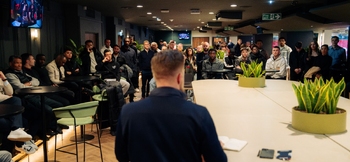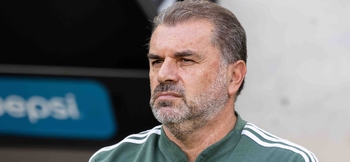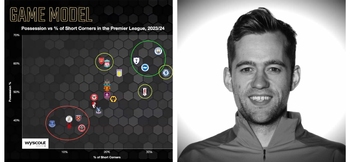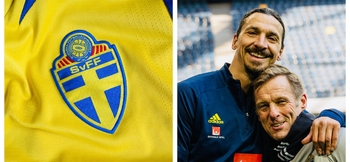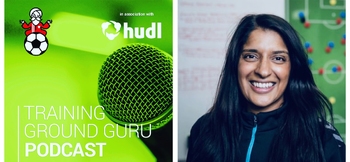How futsal is part of the football fabric of River Plate in Argentina
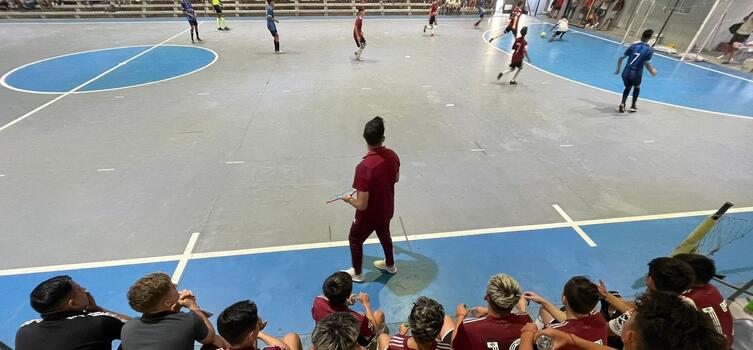
Manuel Sanchez on the sideline for a River Plate futsal match
Written by Benjamin Aceiton Rojas — February 28, 2023
LIONEL MESSI has said futsal “really helped me become who I am today” and the sport is part of the football fabric of Argentina.
Like Messi, many of the country’s stars grew up playing futsal in their formative years. It's more than just a foundation for football, however, and is a popular sport in its own right. Futsal is played indoors, usually five-a-side and there are hockey-sized goals and a size-four ball.
Argentina are a futsal superpower and one of only three sides (along with Brazil and Portugal) to have won the Futsal World Cup. They triumphed in Colombia in 2016 and reached the final again in Lithuania in 2021, where they lost to Portugal.
River Plate are one of several professional football clubs in the country to have a futsal division, with men’s, women’s and youth teams, with players from six-years-old upwards.
Manuel Sanchez coached with River Plate for three years from January 2020 to January 2023, as Head Coach of their Under-17 men’s futsal team, as well as working with the U12s, U13s and U15s.
I spoke to him about his work in the sport, how futsal links to football and how it could help in England.
FUTSAL IN ARGENTINA
Although the Argentine Football Association oversees both football and futsal in the country, there is no official link between the two sports.
"The truth is that it is difficult to say there is a union,” admits Sanchez. “Even in Argentina, we cannot say that Futsal is as developed as it is in Brazil, where there is a greater connection. The children start playing futsal at school, usually up to U15s.
“After that we can see whether they have the conditions to play futsal or go on the path of football. In Argentina, futsal became massively popular after we won the World Cup in Colombia in 2016. Before that, kids who were not good enough for football went to play futsal."
However, the recent success of the sport does not mean that the salaries and earnings generated by futsal in Argentina are high.
"Those who follow the path of football in Argentina will earn about 19 times more than a futsal player,“ reveals Sanchez. "In Europe, futsal players in the big leagues can learn a living from the sport. They can have their own house, car and be quite famous. Not in Argentina.
"This is detrimental to young people considering futsal as a professional career."
LINKS TO FOOTBALL
Sanchez says that futsal is "all about decision-making in small spaces and technically players have to be very precise when they execute," so you can immediately see its relevance to football.
“The link I identify at the moment is mainly decision-making and playing in small spaces," Sanchez adds "Tactical and technical aspects can be used and transferred from futsal to football. This can provide big benefits to a footballer.
“We have 40 metres of pitch: six metres for each of the goalkeeper’s areas and 28 remaining. For me, there is an incredible connection with 11-a-side football. The triangulation in the World Cup final between Messi, McCallister and Julian Alvarez is constantly trained in futsal, under very high pressure and in extremely tight spaces.
"I used to watch (former River Plate Head Coach) Marcelo Gallardo's training sessions and he would start some of the training sessions exactly like us. We would start training with passing and receiving.

Sanchez (coach on the left) talking to River Plate team during a match
"Pep Guardiola started to take a lot of concepts from futsal - in his way of surrounding the area, moving the ball quickly with the sole objective of opening up spaces. Also, you see many rotations where the players manage to distract and create space for team-mates.
"These rotations mean players can handle themselves in different areas of the field, knowing how to play on the edges and in the middle, and are very used to 1v1s.
"For me, the premise of futsal is to defend well to attack and vice versa. The first thing we try to do with the player is to organise them so they are prepared for every moment of the game.
"We defend and attack in a very organised way in futsal. You can play with three defenders, one attacker, or four players on the same line. With this information, the players must know that the keyword in futsal is coverage and that three can attack, while one must stay further back in case they lose the ball.”
In terms of offensive concepts in futsal, Sanchez says: "We look for the fundamental principles of mobility without the ball to generate space. Movements without the ball are necessary. Then, without touching the ball, the player knows that he is opening spaces for the rest.
"And dualities are key in futsal - 2v1 or 2v2. Combining two players is fundamental to breaking lines and disrupting the opponent. It also adds to this by finding the third man, a movement that comes from dualities".
"We generate exercises where the players are in 1v1 but past the midfield. We try to make the player understand where to risk more or less, as the dimensions of the pitch determine the game and tactics".
Because futsal is played on a small pitch between small sides, with the ball constantly in play, it is fast moving and both physically and psychologically demanding. Unlimited substitutes are allowed and Sanchez says when a player, “feels physically or psychologically fatigued, he has to be generous and allow another team-mate to come in."
In terms of defensive concepts of the game, he says, "the fundamental one is coverage." This means "adopting behaviours to recover the ball if a team-mate loses it."
"Covering is trained at all ages, and we try to integrate it in the players' minds as a part of the strategy that cannot be forgotten in a match."
The second fundamental concept is understanding the weak side of the court.
"This is where the ball is not," Sanchez explains. "The fundamental thing is to orient the body so we can always see the ball; to be behind the imaginary line of the ball so that all the players can see it.
"We train the body position of all our players so that the opponent cannot play the ball to the weak side. Locking the opponent in, against the side where the ball is, is fundamental to have an aggressive strategy to prevent the opponent from changing sides or dribbling with the pivot.
"The way of placing the feet when marking, using the arms and where the chest is pointing are technical aspects that contribute a lot to this. The opponent will identify the body posture of our players and make decisions based on that. Even using the arms well makes the opponent see less space on the pitch."
WHAT TO LOOK FOR IN A YOUNG PLAYER
Sanchez explains: "We place great emphasis on ball control and receiving. We want to develop precision with the pass, playing the ball to the back foot and turning the body to receive forward.
"We have a very aggressive attacking vision. We want to have the ball and for the opponent to know that we will not stop attacking. By 12 or 13-years-old, all players will be able to handle movements without the ball and understand why they do it.
"I wouldn't say I like to give a lot of instructions to players: I like them to decide what moves to make. By the older ages I'm looking for players who arrive full of tools to adapt very quickly to the first team.
"There are a lot of technical details for players to handle and incorporate at that level."
Sanchez says it is also important for youngsters to have experience of playing up with older players to learn how to use their technique and body effectively.
"Ultimately, it's like when you train with a weight waistcoat and then take it off," he says. "It makes a big difference to a player's long-term development if he has constant contact with older players."
Set pieces are crucial in futsal - perhaps even more than in football, because of the smaller size of the pitch and number of players.
"The set piece is something that we take very seriously," Sanchez says. "We have numbers or words to differentiate the plays. We have six planned set plays and three throw-in plays."
BABY FUTBOL
Baby Futbol, which is unique to Argentina, is futsal in an even more reduced size. It is played up to the ages of seven or eight and features five players plus the goalkeeper. At eight and nine it is played with four players plus the keeper, as in futsal.
There are key differences between Baby Futbol and futsal though. In Baby Futbol, there are throw-ins, you cannot go to the floor and the coach is behind the goal. There are organised leagues for Baby Futbol and scouts compete to get the most outstanding talents.
Sanchez says Baby Futbol has been the basis for the Argentina national team over the last 20 years.
"The truth is that most Argentine children play baby football and nowadays ALL the players of the Argentina national team went through baby football. This sport has categories up to 13-years-old and the top teams in our country recruit the most talented players from these teams.
“This is where most scouts focus on recruiting and there is close attention to the baby football leagues and tournaments. It doesn't have FIFA rules and you can play on a different size pitch. It is not played all over the world, it is only seen in Argentina.”
ENGLAND
At the end of 2020, the Football Association cut their funding for futsal, meaning the men's senior, U19 and U23 teams were scrapped, as were plans to set up a senior women's team.
Michael Skubala, now Leeds first-team coach and previously their interim manager, had been England men's senior futsal Head Coach. Unlike in Argentina, with clubs like River Plate, no professional club in England has an official futsal division.
"I am surprised that futsal is not catching on quickly in England, where they have the most prominent football league in the world," Sanchez admits. "Because of the infrastructure and the football culture that England typically shows, I expected England to get into the elite of the sport more quickly.
“If they organise it well and fund the leagues, England could have a competitive team very quickly. Here in Argentina, amateur clubs find it difficult to find courts to train and play on. That distracts and complicates the logistics in the day-to-day running of the sport.
“England, for me, would not have these problems."









